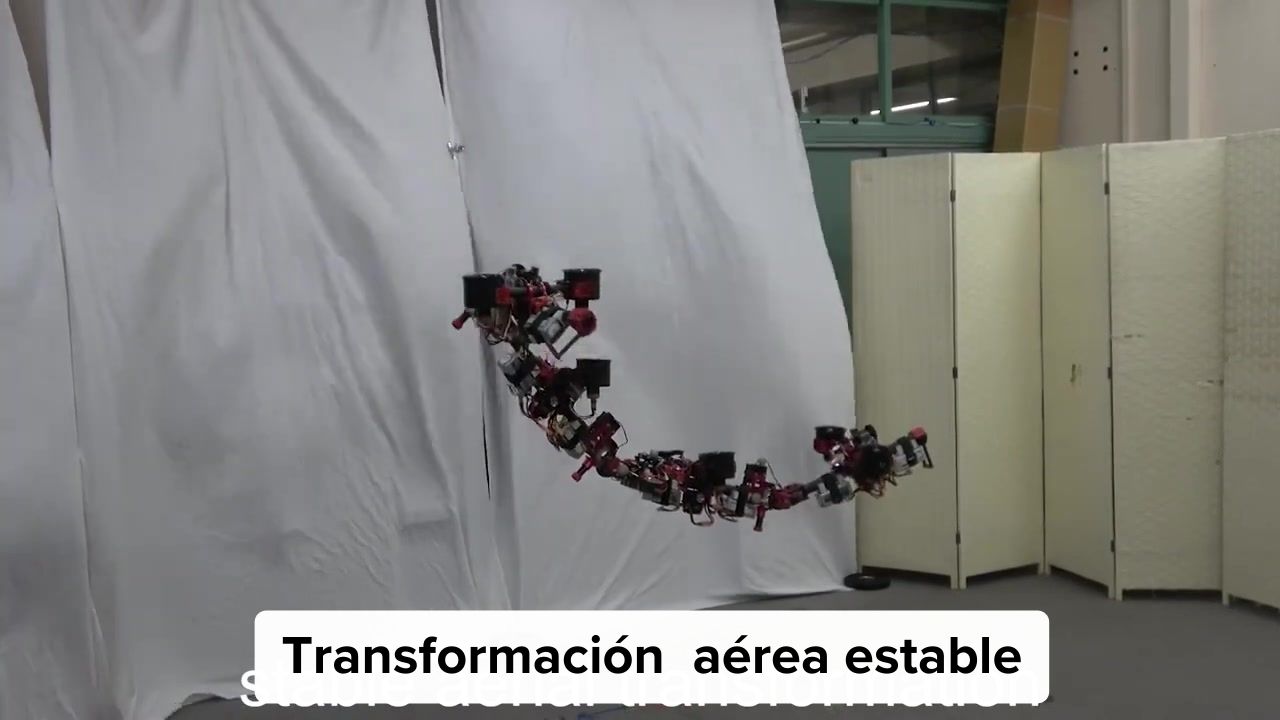In recent years, advances in aerial manipulation and gripping have been made by adding additional manipulators to aerial robots. However, the coupled platform has limitations in terms of interaction strength and mobility. A team of researchers from the University of Tokyo has presented a new solution to this problem: an articulated aerial robot called DRAGON, which has a vector rotor unit in each link that allows it a stable aerial transformation.
The key to achieving stable handling and grip in the air is the use of a rotor vectoring apparatus that has two degrees of freedom. The team has developed a comprehensive flight control methodology for aerial transformation using vector thrust force and considering the dynamics of vectoring actuators. This proposed control method allows to suppress oscillation due to the dynamics of vectoring actuators and also to allow integration with external and internal forces for object manipulation and gripping.
In addition, an in-line thrust level planning method for bimanual object grasping using the two ends of this articulated model is presented. The proposed gripping style is unique in the sense that vector thrust force is used as the internal force instead of joint torque.
The team has shown the experimental results of the evaluation of the proposed control and planning methods for object manipulation and grasping. This innovative approach to articulated aerial robots could significantly improve the ability to manipulate and grasp objects in the air in a variety of applications, from infrastructure inspections to search and rescue operations in hazardous environments.
What is stable aerial transformation?
Stable aerial transformation refers to the ability of an aerial robot to maintain its stability during manipulation and grasping of objects in the air. In other words, the robot must be able to control its movement while manipulating objects without losing balance or experiencing oscillations that could affect its ability to perform precise tasks. Stable aerial transformation is essential for applications that require precise handling of objects in the air, such as infrastructure inspections or search and rescue operations in hazardous environments. To achieve a stable aerial transformation, aerial robots must be equipped with precise control systems that allow control of the position, orientation and movement of the robot and the objects manipulated in the air.
Investigators: Moju Zhao, Department of Mechanical Engineering, Graduate School of Engineering, University of Tokyo, 7-3-1 Hongo, Bunkyo-ku, Tokyo 113-8656, Japan.

